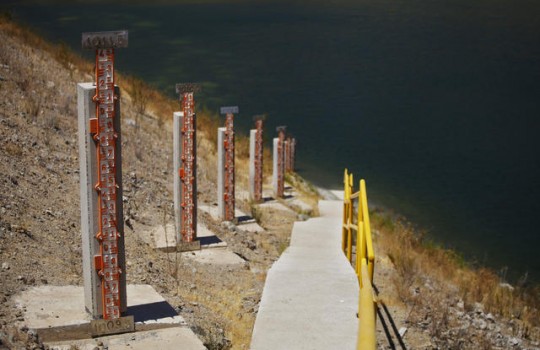
Weak thaws are expected this year, and it could be the driest year in the last five decades.
Reservoir energy is at minimum levels and represents 35% of the historical monthly average.
The lack of precipitation continues to be a constant. During August, the energy stored in the Central Interconnected System (SIC) remained at very low levels, representing only 35% of the historical monthly average, according to Systep’s latest report.
This indicates that so far in the 2016/2017 hydrological year -from April to August of this year-, the observed surplus level is equal to 91%. In other words, it is in the lowest 9% of the lowest hydrologies observed at the same date.
In one year, the energy generated by means of reservoir hydropower went from 30% to almost half, 16%, while in the same period – between August 2015 and the same month of 2016 – the energy generated by run-of-river hydropower went from 21% to 19%, according to Systep. In other words, in total, the contribution of hydropower went from 51% to 35%. Likewise, liquefied natural gas (LNG) went from 10% to 15%, coal from 28% to 35%, while wind energy increased from 4% to 5% and solar energy from 1% to 3% in one year.
Rodrigo Jiménez, general manager of Systep, says that although the levels of energy stored in the reservoirs for August decreased with respect to the previous year, and with it the hydraulic generation, no relevant effect on the marginal costs of the SIC can be seen in that month, understanding by this the average price of the energy generated by the most expensive plant that injects into the system, and which marks the transactions in the spot or free market. It explains that marginal costs in the period decreased by 13%, from US$ 54.5 per MWh in 2015 to US$ 47.2 per MWh this year. This is explained by “other variables that had a greater relevance in shaping spot prices and that counteracted the lower hydro generation. These include an increase in solar generation, a decrease in fuel prices in relation to the previous year, and a greater increase in installed capacity in relation to the increase in energy sales (3.4% versus 1.1%, respectively),” Jiménez points out.
Weak thaws
The future does not look any better. The executive explains that according to the first snowmelt forecast published in September by the SIC’s Economic Load Dispatch Center (CDECSIC) for the 2016/2017 season, dry conditions are expected to be maintained in most basins, with surplus levels above 90%.
As “El Mercurio” published in July, 2016 could be the driest in the last 56 years, specifically since 1960, when CDECSIC started with this measurement. So far in 2016, rainfall has been scarce, especially in the south of the country, where most of the hydroelectric power plants are located. This situation affects the system, since these generators are considered one of the cheapest, and, therefore, their loss of weight in energy injections means that other types of sources are beginning to take center stage.
Although factors such as the increase in NCRE and lower fuel prices have alleviated the effect of water scarcity on prices.





